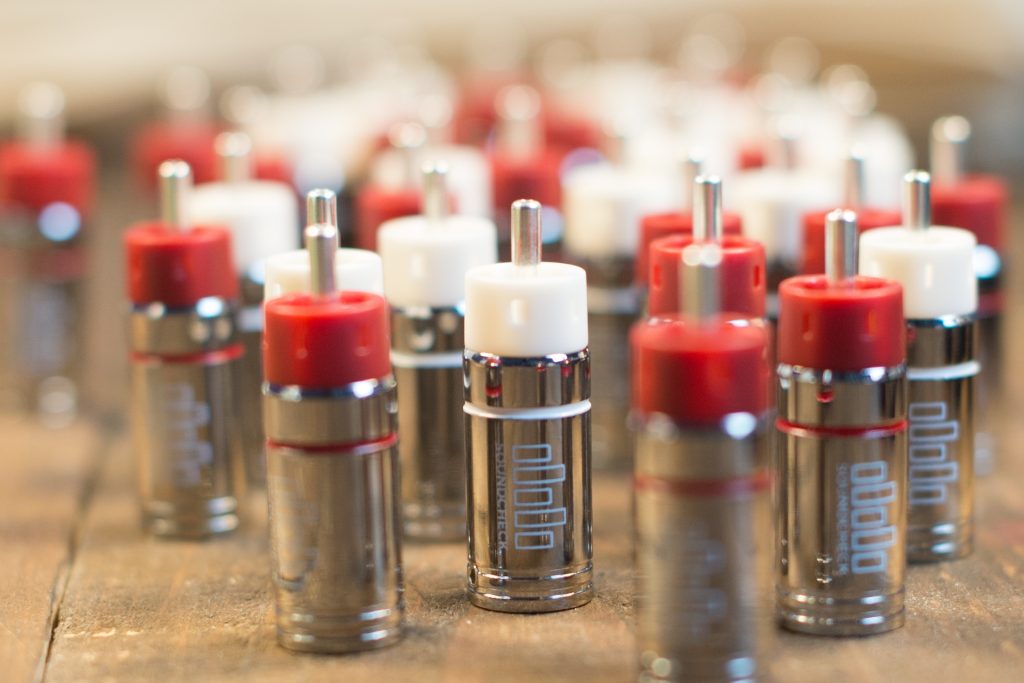“Plug’n’Play”
Terminations at the ends of cables and interconnects are part of the signal path.
High-quality terminations are essential to a good quality cable.
RCA and speaker plugs, for example, are usually made of copper, brass, or a mixed alloy.
Often this alloy is plated with nickel, then polished with gold, silver, or rhodium to prevent oxidation.
Each of these solutions, combined with soldering or crimping, influences the sonic signature of the cable.

“Sound Architecture”
The way all these elements are arranged makes up the cable geometry, for the best cables (like ours) we should say the cable architecture.
Some designers argue that geometry is the most important factor in cable design, even more important than the material and type of conductor.
A basic example of how the physical structure of a cable can affect its performance: simply twisting a pair of conductors around each other instead of sliding them side by side.
The twisting of the conductors greatly reduces the capacity and inductance in the cable.
In fact, it is enough to think of the physical structure of two conductors running in parallel and compare it with the schematic symbol of a capacitor, which is two parallel lines.
But this is just the coarsest example, there are many other important details in cable design.
“Technical stuff”
The three most relevant technical specifications on cables are resistance, inductance and capacitance.
For brevity, RESISTANCE(measured in Ohms) is a measure of how much the cable opposes the flow of current through it. Resistance is not usually a determining factor in the performance of interconnect cables (except in a few cases), but it can sometimes affect speaker cables.
The sound of interconnects and speaker cables can also be affected by INDUCTIVITY.
It is generally thought that the lower the inductance, the better the sound (particularly in speaker cables). Some power amplifiers, however, need to see some inductance to keep themselves stable.
CAPACITANCE is an important characteristic of interconnect cables, particularly when using long runs or if the source component has a high output impedance.
Too high capacitance can cause treble roll-off phenomena and particularly limited dynamics.





